The Ultimate Guide to Mastering B2B Lead Generation Strategy: Boost Your Sales and Grow Your Business
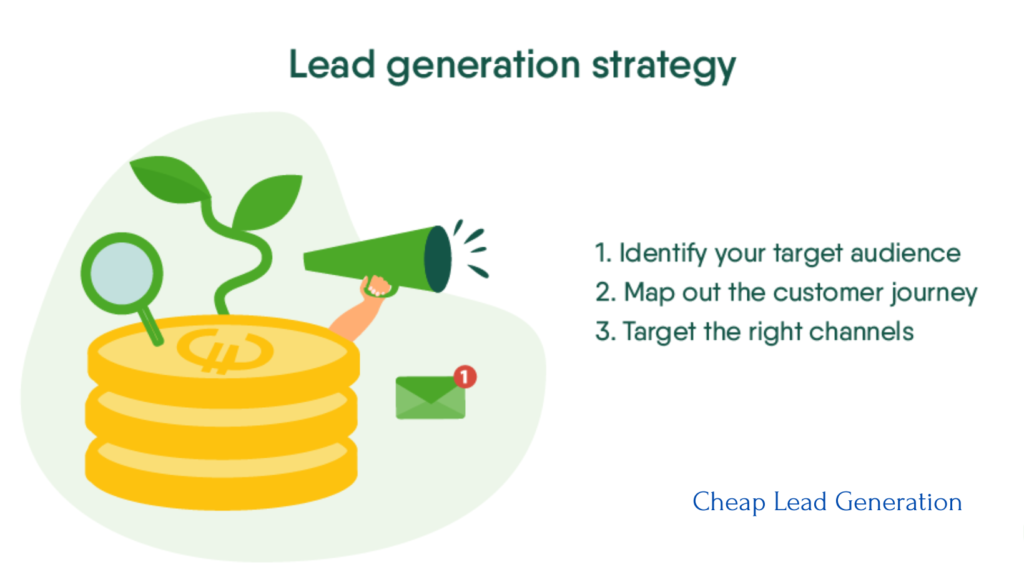
Are you struggling to generate high-quality leads for your B2B business? Are you tired of traditional marketing methods that yield lackluster results? Well, fret no more! In this ultimate guide, we will unveil the secrets to mastering the art of B2B lead generation. From social media marketing and email campaigns to content creation and SEO strategies, we’ve got you covered. So get ready to boost your sales and grow your business like never before! Let’s dive in and discover the proven techniques that will revolutionize your lead generation game plan.
Understanding Your Target Audience
To master B2B lead generation, it is crucial to have a deep understanding of your target audience. This involves going beyond basic demographics and delving into their pain points, challenges, and motivations. By gaining insights into their needs and desires, you can tailor your marketing efforts to effectively reach them.
Start by conducting thorough market research. This includes analyzing industry trends, competitor analysis, and customer feedback. Use this information to create buyer personas that represent different segments of your target audience.
Once you have identified your target audience, develop a messaging strategy that resonates with them. Craft compelling content that addresses their pain points and offers solutions. Personalize your communication to show that you understand their specific challenges.
Utilize data analytics tools to track customer behavior and engagement metrics. This will help you refine your targeting strategies over time based on real-time insights. Experiment with different channels such as social media platforms or email campaigns to determine which ones yield the best results for reaching your audience.
Remember, understanding your target audience is an ongoing process. Stay updated on industry changes and continuously gather feedback from customers to refine and improve your approach. By keeping tabs on evolving preferences and behaviors, you can optimize lead generation efforts for maximum impact.

Creating a Solid Value Proposition
When it comes to B2B lead generation, one of the key elements that can make or break your success is having a solid value proposition. In basic terms, your value proposition explains why prospective customers should choose you over your competitors.
To create a strong value proposition, start by understanding the pain points and needs of your target audience. What problems are they facing? How can your product or service solve those problems? By identifying these pain points, you can tailor your value proposition to address them directly.
Next, focus on highlighting the specific benefits that customers will gain from choosing your solution. This could include cost savings, increased efficiency, improved productivity, or any other tangible results that align with their goals.
Another important aspect of creating a solid value proposition is clearly articulating how your product or service differs from others in the market. What makes you unique? Is it superior quality, advanced technology, exceptional customer service? Highlighting these differentiators will help position yourself as the preferred choice for potential customers.
In addition to focusing on what makes you stand out, ensure that your value proposition resonates with the emotions of your target audience. A person’s decision is strongly influenced by their emotional needs as well as logic.
Craft a straightforward value proposition for B2B lead generation. Avoid technical jargon and complexity. Use clear language to convey the benefits of choosing your solution.
A tailored value proposition for B2B lead generation sets you apart and boosts sales, fostering business growth in today’s competitive market

Utilizing Various Channels for B2B Lead Generation
When it comes to B2B Lead Generation, using multiple channels is key to reaching a wider audience and maximizing your chances of success. Gone are the days when cold calling or email blasts were enough. Today, businesses need to be present where their target audience is.
One effective channel for lead generation is social media. Platforms like LinkedIn and Twitter allow you to connect with potential leads directly and establish valuable relationships. By sharing informative content, engaging in industry discussions, and showcasing your expertise, you can attract interested prospects who may eventually become customers.
Another powerful tool in your arsenal is content marketing. Creating high-quality blog posts, videos, whitepapers, or webinars that address your target audience’s pain points will not only position you as an authority but also generate leads through organic search traffic and referrals.
Email marketing remains a tried-and-true method for nurturing leads over time. By offering valuable resources such as eBooks or exclusive discounts in exchange for contact information, you can build a database of qualified prospects eager to hear more from you.
Don’t underestimate the power of events either! Participating in trade shows or hosting webinars allows you to engage with potential clients face-to-face (or virtually) while giving them a taste of what your business has to offer.
Consider partnering with influencers or industry experts who have already built trust among your target audience. Collaborating on co-branded content or sponsoring their podcasts can give you access to new leads who are more likely to convert due to the endorsement they receive from someone they trust.
By utilizing various channels strategically and consistently monitoring their effectiveness through analytics tools like Google Analytics or HubSpot’s tracking features ,you’ll be able to fine-tune your approach over time and optimize results.
Social Media Marketing
Social media has become an integral part of our daily lives, and it’s also a powerful tool for B2B lead generation. With billions of active users on various platforms like Facebook, LinkedIn, Twitter, and Instagram, social media marketing can help businesses reach a wide audience and generate quality leads.
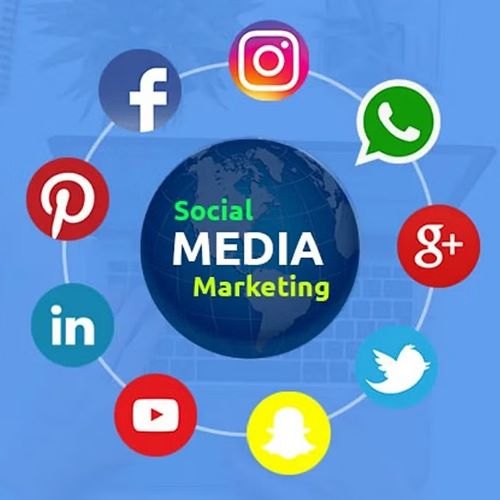
One of the key advantages of social media marketing is its ability to target specific demographics. This means that you can tailor your content and ads to reach the right audience based on factors such as age, location, job title, or industry. By doing so, you can ensure that your message resonates with potential leads who are most likely to be interested in your products or services.
Social media platforms offer engagement tools beyond targeting. Share industry-related blog posts to showcase thought leadership and interact with followers through comments and messages to build relationships with potential leads.
Social media marketing is cost-effective compared to traditional advertising. Careful planning and strategy can yield high-quality leads at a fraction of the cost.
To get the most out of your social media efforts for lead generation purposes:
1) Define clear goals: Determine what exactly you want to achieve through your social media campaigns – whether it’s brand awareness, website traffic increase or lead generation.
2) Choose the right platforms: Research which social media platforms are popular among your target audience and focus on those.
3) Create valuable content: Share helpful information related to your industry that will resonate with potential leads.
4) Consistency is key: Regularly post updates and engage with followers consistently.
5) Track metrics: Learn what works best to generate leads by monitoring analytics data provided by each platform.
Incorporate effective B2B lead generation strategies into your plan, and watch social media marketing drive significant business growth. Don’t miss out—capitalize on it.
Email Marketing
Email marketing is a powerful tool in the B2B lead generation arsenal. It allows businesses to connect directly with their target audience, delivering tailored messages and personalized content straight to their inbox. But it’s not just about sending out mass emails and hoping for the best – successful email marketing requires strategy and careful planning.
One of the first steps in effective email marketing is building a quality subscriber list. This involves capturing leads through various channels such as website sign-up forms, social media campaigns, or even offline events. The key here is to attract individuals who are genuinely interested in your product or service.
Once you have a solid list of subscribers, it’s time to create compelling and engaging email content. Personalization is essential – addressing recipients by name and tailoring the message based on their preferences helps establish a connection and increases open rates. Providing valuable information, offering exclusive deals or discounts, or sharing industry insights can all help keep your audience engaged.
Segmenting your email list based on demographics, interests, and behavior allows for more targeted campaigns. Monitoring metrics like open rates, CTRs, conversions, and unsubscribes offers insights to improve your email strategy.
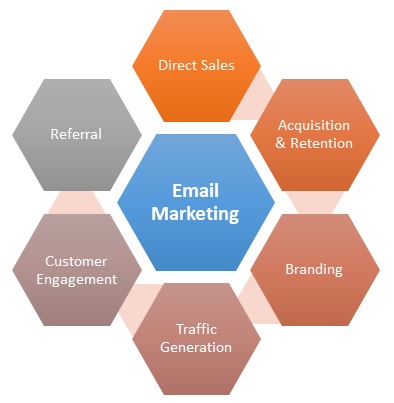
Remember that consistency is vital when it comes to email marketing. Regularly sending out informative newsletters or updates keeps your brand top-of-mind while also establishing trust with your audience over time.
In conclusion: Email marketing is vital for B2B lead generation. Personalized messages to quality subscribers, engaging content, segmentation, and metrics analysis enhance campaign effectiveness.
Content Marketing
Content Marketing is an essential component of any successful B2B lead generation strategy. With the ever-increasing amount of information available online, businesses need to create valuable and engaging content that attracts and educates their target audience.
One of the most effective ways to generate leads through content marketing is by creating high-quality blog posts. By consistently publishing informative articles that address pain points and provide solutions for your ideal customers, you can establish yourself as a thought leader in your industry. This will not only attract potential leads but also build trust and credibility with your audience.
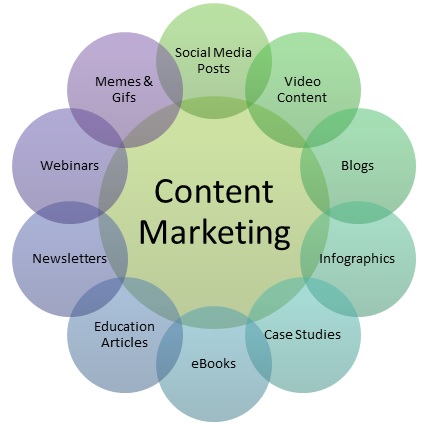
Another powerful content marketing tool for lead generation is producing educational videos. Video content allows you to showcase your expertise, demonstrate product features, and engage viewers on a deeper level. Whether it’s hosting webinars or creating tutorial videos, incorporating video into your content strategy can significantly increase brand awareness and capture valuable leads.
Additionally, eBooks and whitepapers are great resources for capturing contact information from interested prospects. By offering downloadable guides or reports in exchange for email addresses or other contact details, you can effectively nurture these leads through targeted email campaigns.
Don’t forget about infographics! Visual content like infographics can help simplify complex concepts while still providing value to your audience. Infographics are easily shareable on social media platforms which amplifies their reach potential even further.
When it comes to B2B lead generation strategy, leveraging the power of content marketing is crucial. By creating informative blog posts, videos, eBooks, and infographics, you’ll be able to attract a qualified audience who are genuinely interested in what you have to offer.
And remember, content marketing should always be focused on providing value rather than just promoting products or services.
SEO and PPC Advertising
SEO and PPC advertising are two powerful strategies that can greatly enhance your B2B lead generation efforts.
When it comes to SEO, optimizing your website for search engines is crucial. This involves conducting keyword research to identify the terms and phrases potential customers are using to find businesses like yours. By incorporating these keywords into your website content, meta tags, and URLs, you can improve your organic search rankings and attract more qualified leads.
On the other hand, PPC advertising allows you to display targeted ads on search engine results pages or other websites in exchange for a fee each time someone clicks on your ad. This method provides instant visibility and immediate results by placing your brand in front of potential customers who are actively searching for products or services related to what you offer.
Both SEO and PPC require ongoing monitoring and optimization to ensure optimal performance. Analyzing data such as click-through rates, conversion rates, and cost-per-acquisition will help you refine your campaigns over time for maximum ROI.
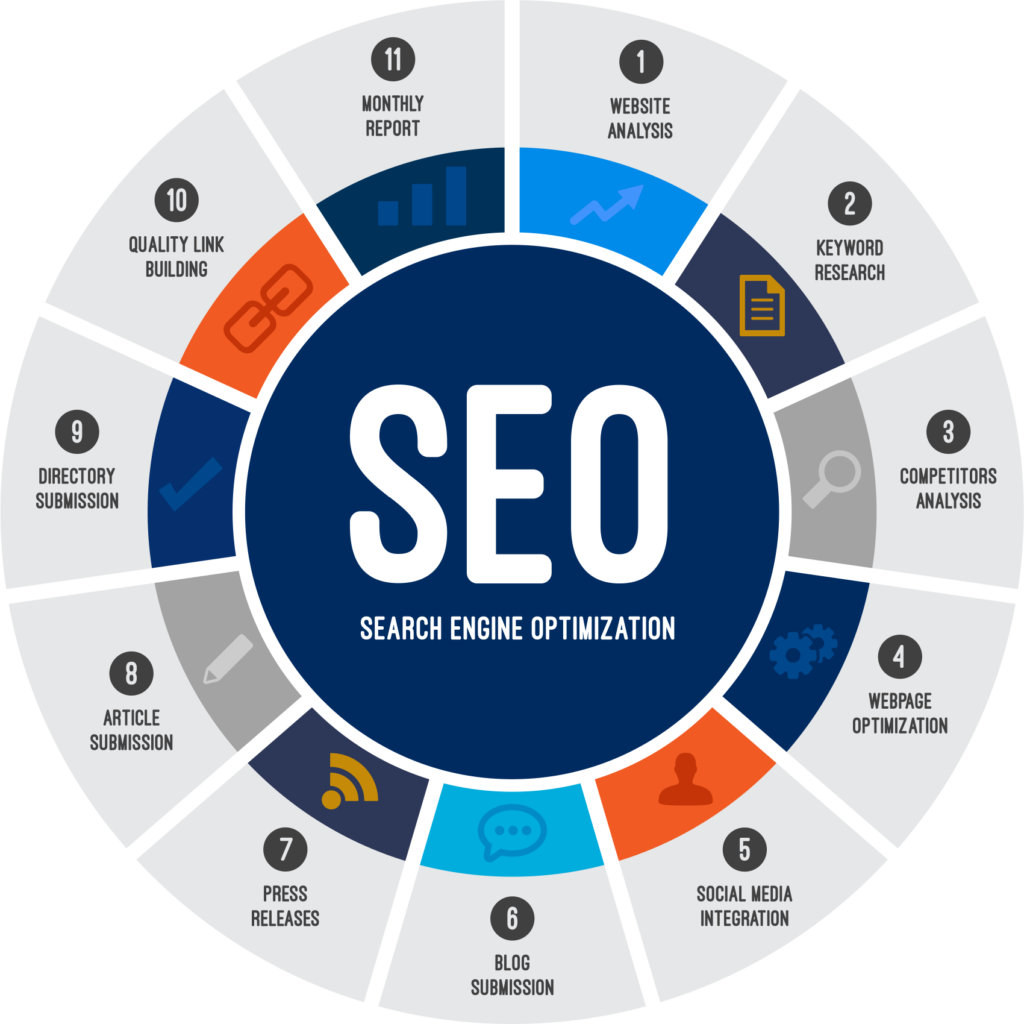
By leveraging both SEO and PPC together in a coordinated strategy, you can effectively increase visibility, drive traffic to your website, generate high-quality leads, and ultimately boost sales for your B2B business.
Developing a Lead Scoring System
Once you have generated a pool of leads, it’s important to prioritize them based on their potential value. This is where developing a lead scoring system comes into play. A lead scoring system allows you to assign points or scores to each lead based on criteria such as demographics, behavior, and engagement level.
By implementing a lead scoring system, you can identify the most qualified leads and focus your efforts on nurturing them further down the sales funnel. This helps ensure that your sales team spends their time and resources efficiently, resulting in higher conversion rates and increased revenue.
To create an effective lead scoring system, define relevant criteria, like job title, industry, website activity, and more. Assign scores based on their importance in predicting conversions. Continuously refine your system as prospect behaviors and market dynamics change.
Utilize machine learning tools to predict high-converting leads. Keep in mind that lead generation is an ongoing process; use analytics for data-driven campaign optimization.
In conclusion,
Lead scoring is an essential component of any successful B2B lead generation strategy. By assigning values to each lead based on their behavior and characteristics, you can prioritize your efforts and focus on the most promising prospects. As we conclude our discussion on developing a lead scoring system, let’s recap some key points.
Collaborate with your sales team to define lead-scoring criteria. Use technology for automation, like CRM or marketing platforms, to track data and identify high-value leads in real time. Continuously refine your scoring model based on performance, and evaluate its effectiveness by analyzing conversion rates and sales outcomes for improved lead generation.
Nurturing Leads through the Sales Funnel
Once you’ve generated leads for your B2B business, the next step is to nurture those leads through the sales funnel. This involves building relationships with your potential customers and guiding them towards making a purchase.
Lead nurturing starts with awareness; provide valuable content like blog posts and webinars. As leads move to the consideration stage, offer case studies and testimonials to show how your product can help them.
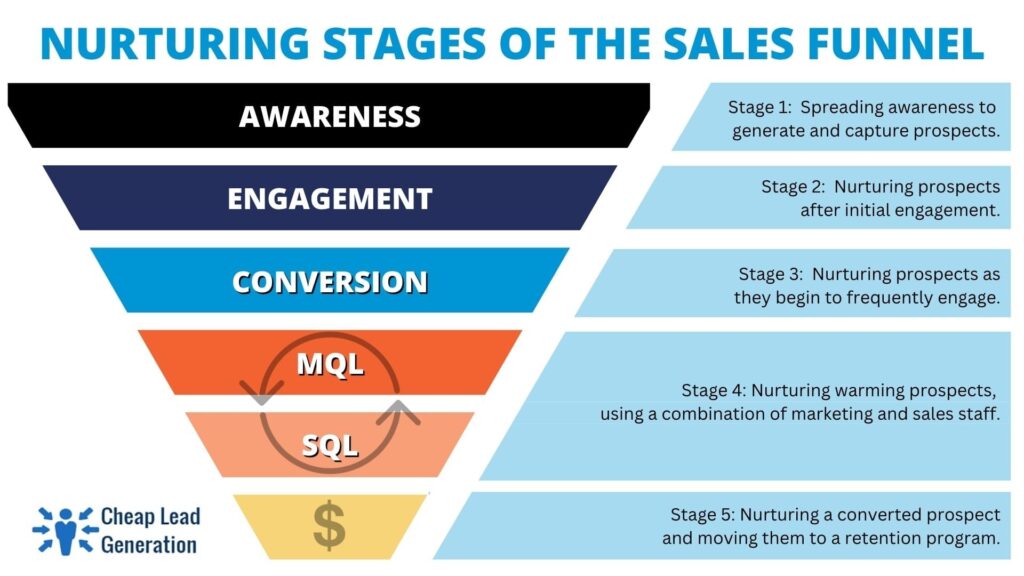
In the decision stage of the sales funnel, it’s crucial to provide personalized and targeted information that addresses any concerns or objections prospects may have. This could include offering a free trial or consultation to showcase the value of your offering.
Throughout each stage of nurturing leads, it’s essential to maintain consistent communication via email marketing campaigns or social media interactions. By providing relevant and timely information based on their specific needs and interests, you can build trust and credibility with potential customers.
Remember that lead nurturing is an ongoing process that requires continuous monitoring and adjustment based on feedback from prospects. By understanding their pain points and addressing them effectively at each stage of the sales funnel, you increase your chances of converting leads into loyal customers.
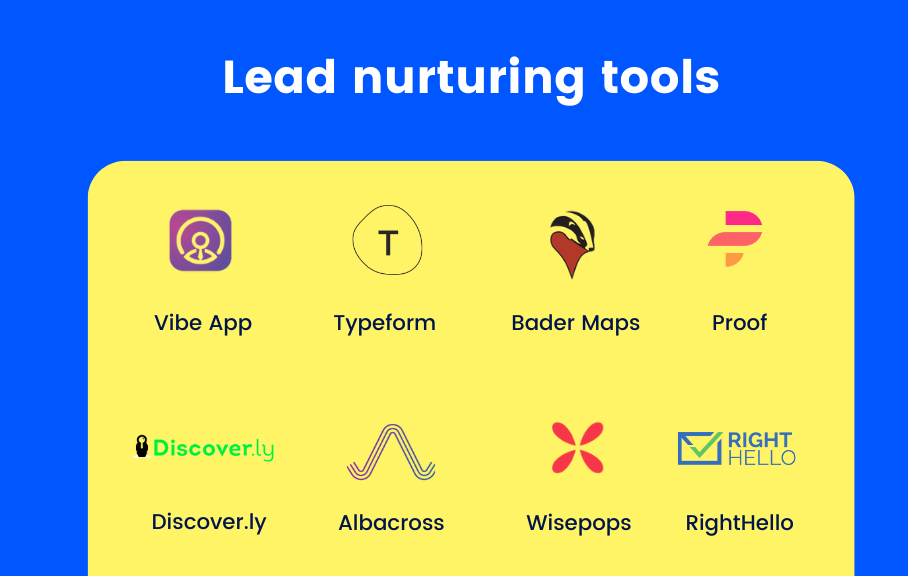
Success in nurturing B2B leads relies heavily on understanding buyer behavior patterns within different industries as well as leveraging automation tools for efficient lead management. Take advantage of CRM systems like Salesforce or HubSpot which enable seamless lead tracking while integrating various marketing channels for maximum impact.
In summary, nurturing B2B leads requires consistency, content relevancy, and personalization throughout every touchpoint in order optimize conversions. With a well-defined strategy and the right tools in place, you can nurture.
Measuring and Analyzing Results
Measuring and analyzing the results of your B2B Lead Generation efforts is a crucial step in optimizing your strategy. It allows you to gain valuable insights into what’s working and what needs improvement. One key metric to track is conversion rate – how many leads actually convert into customers? By monitoring this, you can identify any bottlenecks or areas for optimization within your sales funnel.
Another important aspect to measure is the quality of leads generated. Are they qualified prospects who are likely to become paying customers? Look at factors such as lead source, demographics, and behavior patterns to determine if you’re attracting the right audience.
Additionally, don’t forget about tracking engagement metrics like click-through rates, email open rates, or website traffic. These indicators provide valuable feedback on the effectiveness of your messaging and content.

To analyze these results effectively, use tools like Google Analytics or CRM systems that offer robust reporting capabilities. Dig deep into the data and look for patterns or trends that can inform future marketing decisions.
Remember, measuring and analyzing results should be an ongoing process. Continuously monitor your metrics and make adjustments as needed to optimize your lead generation strategy for maximum success!
Common Mistakes to Avoid in B2B Lead Generation
In the world of B2B Lead Generation, there are many pitfalls that businesses can fall into. These mistakes can hinder your efforts and prevent you from achieving success. In order to generate high-quality leads, it’s important to avoid these common errors.
One mistake is not having a clear target audience or ideal customer profile. Without this clarity, your marketing efforts will lack focus and may not resonate with the right people. Take the time to define your target audience and understand their pain points, needs, and preferences.
Another common mistake is relying solely on one lead generation channel. While it’s great to have a go-to strategy that works for you, it’s important to diversify your approach. Get more leads by utilizing social media advertising, content marketing, email campaigns, and webinars.
Neglecting the importance of nurturing leads is another blunder many businesses make. Just because someone has shown initial interest doesn’t mean they’re ready to buy immediately. Personalization and targeted content are key components of an effective lead nurturing strategy.
Additionally, failing to track and analyze data is a grave mistake in B2B lead generation. Data provides valuable insights into what tactics are working well and where improvements can be made. Using Google Analytics or CRM systems to track metrics such as conversion rates and website traffic sources.

Lastly but equally important is not aligning sales and marketing teams effectively. Collaboration between these departments ensures smooth handoffs from marketing-qualified leads (MQLs) to sales-qualified leads (SQLs). Establish open lines of communication between both teams by setting up regular meetings or using collaboration software.
If you avoid these common B2B lead generation mistakes, you’ll get more qualified leads and boost your company.
Case Studies: Successful B2B Lead Generation
Case studies are like golden nuggets in the world of B2B Lead Generation. They provide real-life examples of successful strategies and tactics that have yielded impressive results. By studying these case studies, you can gain valuable insights into what works and what doesn’t when it comes to generating leads for your business.
One such success story is the case study of Company X, a B2B software provider. They were struggling to attract qualified leads and convert them into customers. After conducting thorough market research, they identified their target audience and developed a highly targeted content marketing campaign.
Through strategic content creation and distribution, Company X was able to position themselves as industry leaders and thought influencers, attracting high-quality leads who were genuinely interested in their products. Their lead generation efforts resulted in a staggering 200% increase in sales within just six months!
Take inspiration from Company Y, a B2B digital marketing specialist. Their personalized email strategy, using segmentation and automation, boosted open rates, CTRs, and conversions. These cases show the value of addressing audience pain points with tailored campaigns and efficient tech.
In conclusion
The key takeaway from these successful case studies is that there is no one-size-fits-all approach when it comes to B2B lead generation. Each business is unique with its own set of challenges and opportunities. However, by studying successful case studies like these ones mentioned above, you can gain valuable insights into effective strategies that may work for your specific industry or niche.
CLG Cheap Lead Generation
Why Every Business Needs Lead Generation Services: Exploring the Benefits
Are you struggling to find new customers for your business? Do you want to take your sales to the next level? If so, then it’s time to explore the world of lead generation services. In today’s competitive market, generating high-quality leads is crucial for every business looking to thrive and grow. Whether you’re a small start-up or an established company, lead generation can be the key that unlocks unlimited opportunities for success.
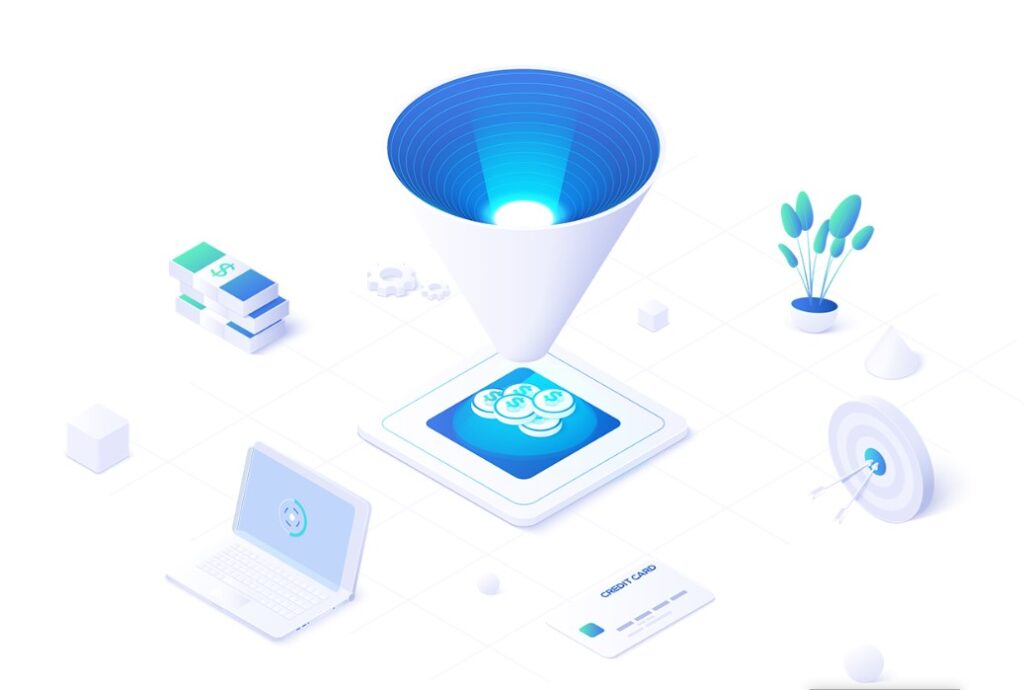
In this blog post, we will dive into the world of lead generation services and explore why they are essential for businesses in any industry. We’ll explain what lead generation is, how it works, and showcase real-life examples of businesses that have experienced incredible results by leveraging these services. Plus, we’ll provide valuable tips on choosing the right lead generation service tailored specifically to your needs.
So get ready to discover how lead generation can transform your business and open doors you never thought possible! Let’s jump right in!
What is Lead Generation? Explaining the concept and its role in generating new business opportunities
Lead generation is a vital process for businesses looking to expand their customer base and boost sales. But what exactly is lead generation? In simple terms, it is the method of identifying and attracting potential customers or leads who have shown an interest in your products or services.
The concept behind lead generation revolves around generating new business opportunities by capturing information from interested individuals. This information can include contact details like email addresses, phone numbers, or social media profiles. Once you have this valuable data, you can nurture these leads through targeted marketing campaigns to convert them into paying customers.
Lead generation plays a crucial role in driving growth for businesses across various industries. As a result, you can target your efforts only on those who are genuinely interested in what you offer.

In today’s competitive market, where consumers have countless options at their fingertips, effective lead generation strategies are essential for staying ahead of the competition. The generation of high-quality leads not only increases sales but also establishes businesses as leaders in their industry.
Content marketing, social media advertising, email marketing, and search engine optimization (SEO) can help businesses reach their ideal prospects and capture their attention.
Lead generation is all about tapping into the vast pool of potential customers out there by implementing strategic methods that attract and engage with interested individuals. In order to maximize business growth potential, businesses should understand how this concept works.
How lead generation services work: the process and methods used to generate leads
Lead generation services play a vital role in helping businesses generate new leads and expand their customer base. But how do these services actually work? Let’s take a closer look at the process and methods used to generate leads.
Lead generation services employ various strategies to identify potential customers who are interested in your products or services. They use techniques like data mining, market research, and customer profiling to gather relevant information about your target audience.
Once the target audience is identified, leads services utilize different channels to reach out to them. This can include email marketing campaigns, social media advertising, content marketing through blogs or articles, search engine optimization (SEO), and even paid advertisements on platforms like Google AdWords.
The aim is to provide valuable content that addresses the pain points of potential customers. By offering something of value upfront, businesses can build trust with prospects and establish themselves as industry experts.
The next step in the lead generation process is capturing the contact information of interested prospects. Visitors provide their details in exchange for more information and exclusive resources on landing pages with opt-in forms.
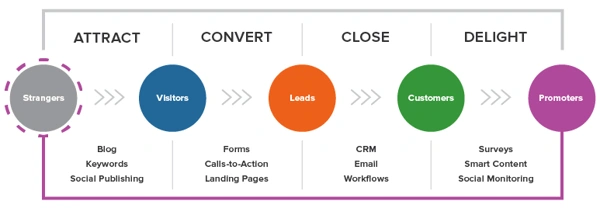
Once the contact information is obtained, b2b lead services nurture these leads through automated email sequences or personalized follow-ups. Keeping prospects engaged and moving them down the sales funnel is the goal here.
To ensure success with lead generation efforts, it’s important for businesses to regularly analyze data and metrics related to generated leads. By tracking progress, they can also determine what strategies will generate high-quality leads in the future.
Businesses looking to expand their customer base can greatly benefit by understanding lead generation services. Having effective strategies for attracting and nurturing leads can drive growth while allowing businesses to deliver quality products to customers.
Case studies and success stories from businesses that have used lead generation services
Case studies and success stories are powerful tools that showcase the real impact of lead generation services. Let’s take a look at some businesses that have reaped the benefits.
First, there’s XYZ Corporation, a B2B software company. They were struggling to generate quality leads despite having an innovative product. After partnering with a lead generation service, they saw a significant increase in their pipeline and closed deals. The targeted approach helped them reach decision-makers in their industry, resulting in higher conversion rates.
Next up is ABC Agency, a marketing firm specializing in digital solutions. They were finding it challenging to attract new clients amidst fierce competition. By leveraging social media advertising as part of their lead generation strategy, they experienced remarkable growth. Their ads reached the right audience at the right time, leading to more inquiries and ultimately more clients on board.

And let’s not forget about DEF Consulting Services – they offer professional consulting for various industries. With email marketing as their primary lead generation tool, they witnessed tremendous ROI. By nurturing leads through personalized emails and valuable content offers, they built trust with potential clients and secured long-term partnerships.
These case studies demonstrate how differ Case studies and success stories are powerful tools that showcase the real impact of lead generation services. Let’s take a look at some businesses that have reaped the benefits.
Different types of lead generation services available, such as email marketing, social media advertising, and content marketing-
Different Types of Lead Generation Services Available
When it comes to Lead Generation, businesses have a variety of options to choose from. Each method offers its own unique advantages and can be tailored to suit specific business needs.

1. Email marketing
One popular approach is email marketing. With this method, businesses can reach out directly to their target audience through personalized emails. By offering valuable content or enticing offers, companies can capture the attention of potential leads and nurture them until they are ready to convert.
2. Social media advertising
Social media advertising is another effective strategy for generating leads. Platforms like Facebook, Instagram, and LinkedIn provide powerful targeting capabilities that allow businesses to reach their ideal customers with precision. By creating engaging ads and promoting relevant content, companies can attract qualified leads who are already interested in what they have to offer.


3. Content marketing
Content marketing also plays a crucial role in lead generation. By creating high-quality blog posts, eBooks, videos, or webinars that address the pain points of their target audience, businesses can establish themselves as industry experts and attract organic traffic from search engines. This not only generates leads but also builds trust with potential customers.
It’s important for businesses to carefully consider which leads services align with their goals and resources. Some may find success by combining multiple methods while others may focus on one particular strategy that yields the best results for their industry or niche.
Understanding the different types of lead generation services available allows businesses to make informed decisions about how they want to generate new opportunities and drive growth in today’s competitive market.
Tips on choosing the right lead generation service for your
Finding the right Lead Generation service for your business is crucial to ensuring success in generating quality leads. Here are some tips to help you make an informed decision:
1. Define your goals: Before choosing a lead generation service, clearly define your goals and objectives. Do you want to increase website traffic, generate more qualified leads, or boost sales? Understanding what you hope to achieve will guide your decision-making process.
2. Consider your target audience: Different lead generation services cater to different audiences. Analyze your target market and determine which platforms or channels they are most likely to engage with. This will help you select a service that aligns with your audience’s preferences.
3. Evaluate expertise and experience: Look for a leads service provider that has proven expertise and experience in your industry or niche. Check their track record by reviewing case studies, success stories, or testimonials from previous clients.
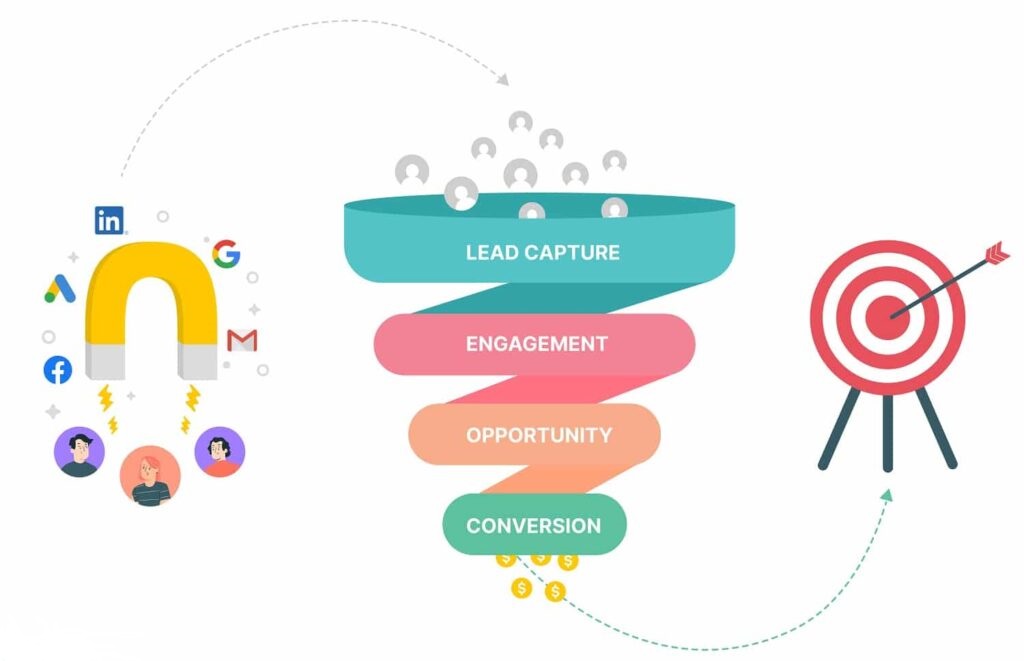
4. Assess technology and tools: An effective lead generation service should have advanced technology and tools that enable targeted marketing campaigns, efficient tracking of leads, and accurate data analysis. Ensure that the platform they use aligns with your business needs.
5. Analyze pricing structure: Compare pricing plans offered by different lead generation services and consider factors such as cost per lead, monthly subscription fees, additional charges for extra features or support, etc. Choose a plan that fits within your budget while offering good value for money.
6. Seek transparency and communication: Open communication is essential when working with a leads service provider since they will be representing your brand online. Look for transparent reporting practices regarding campaign performance metrics so that you can measure ROI effectively.
7. Testimonials & reviews: Ensure you read reviews from other businesses before making any commitments this way; you won’t be surprised later!
Conclusion
Wrapping up our discussion on the benefits of Lead Generation services, it’s clear that this strategy is a game-changer for businesses of all sizes. With the ability to attract high-quality leads and nurture them into loyal customers, leads can significantly boost your sales and revenue.
One key advantage of utilizing lead generation services is the cost-effectiveness it offers. Rather than spending valuable time and resources on traditional marketing methods that may yield limited results, investing in leads allows you to target specific demographics and industries with precision. This targeted approach not only saves you money but also ensures that your efforts are focused on potential customers who are more likely to convert.
Another benefit is the scalability of Lead Generation services. As your business grows, so does your need for a constant flow of new leads. Lead generation companies have the tools and expertise to scale their strategies according to your changing needs, ensuring a steady stream of prospects at every stage of your business journey.
Moreover, by outsourcing leads to experts in the field, you free up valuable internal resources that can be better utilized elsewhere within your organization. Instead of dedicating time-consuming tasks like prospect research and outreach to your team members, they can focus their energy on core business activities such as product development or customer service.
In conclusion (without using those words!), incorporating leads services into your overall marketing strategy is an investment worth making. It not only helps generate a consistent pipeline of qualified leads but also allows you to maximize efficiency while saving costs in the long run. So why wait? Take advantage of these powerful services today and watch as your business reaches new heights!
Contact Us
The Top B2B Lead Generation Tools: Boosting Sales and Efficiency

In the competitive world of B2B Lead Generation sales, capturing high-quality leads is crucial for business growth and success. But with so many potential customers out there, how can you effectively reach and convert them into valuable prospects?
That’s where lead generation tools come in. These powerful software solutions are designed to streamline your lead generation efforts, helping you identify and engage with the right audience at the right time. By automating repetitive tasks, optimizing your marketing strategies, and providing valuable insights, these tools can significantly boost your sales and efficiency.
But with countless options available on the market today, it can be overwhelming to choose the best one for your business needs. That’s why we’ve compiled a list of the top B2B Lead Generation tools that have proven to deliver exceptional results.
In this guide, you’ll find everything you need to make an informed decision about each tool’s features, benefits, and pricing.
Firstly, let’s explore why lead generation tools are essential for any B2B business looking to succeed. So buckle up and get ready to supercharge your lead generation game!
Benefits of Using Lead Generation Tools for B2B Businesses
Boosting sales and increasing efficiency are key objectives for any B2B business. Lead generation tools help you achieve these goals. These tools offer some significant benefits:
1. Increased Productivity: Lead generation tools automate many time-consuming tasks, such as data collection and qualification, allowing your team to focus on closing deals and building relationships.
2. Targeted Audience Reach: These tools enable you to identify and target specific industries, job titles, or demographics that align with your ideal customer profile. This ensures that your efforts are directed towards those who are most likely to convert into customers.
3. Improved Lead Quality: By utilizing lead scoring features offered by many lead generation tools, you can prioritize leads based on their level of engagement and likelihood to convert. This helps your sales team focus their efforts on high-quality prospects.
4. Cost Savings: Investing in lead generation tools eliminates the need for purchasing expensive contact lists or hiring additional staff solely dedicated to prospecting. You can generate leads at a fraction of the cost compared to traditional methods.
5. Data-driven Decision Making: Customers’ behavior patterns and campaign performance metrics are analyzed using these tools. Armed with this information, you can make data-driven decisions about strategy refinement or targeting adjustments.
6. Enhanced Customer Engagement: Many lead generation tools offer features like personalized email campaigns or chatbots that facilitate direct communication with potential customers throughout the buyer’s journey. This results in higher levels of engagement and better relationship-building opportunities.
7. Scalability: As your business grows, so does its demand for new leads. Lead generation tools offer you the flexibility to expand your reach without sacrificing quality or efficiency.
8. Competitive Advantage: Utilizing cutting-edge technology gives businesses an edge over competitors who rely solely on traditional lead generation methods. By adopting these tools, you position.

Top B2B Lead Generation Tools
When it comes to B2B lead generation, having the right tools in your arsenal can make all the difference. With so many options available, it can be overwhelming to choose the best ones for your business. That’s why we’ve compiled a list of the top B2B lead generation tools that are sure to boost your sales and efficiency.
– In-depth explanation of each tool
1. HubSpot: One of the most popular lead generation tools, HubSpot offers a comprehensive suite of features to help businesses attract and convert leads. Its powerful CRM system allows you to track interactions with potential customers and nurture them through personalized email campaigns.
2. Salesforce: A leader in customer relationship management, Salesforce provides robust lead generation capabilities, including lead scoring, automated workflows, and predictive analytics. With its integration options and customizable dashboards, it enables sales teams to streamline their processes and identify the most promising leads.
3. LinkedIn Sales Navigator: LinkedIn Sales Navigator lets businesses find targeted leads based on specific criteria including industry, job title, and company size. It also offers advanced search filters and real-time insights to facilitate effective outreach.
4. Clearbit: With Clearbit, B2B companies can quickly identify potential leads with just an email address or company name.
5. ZoomInfo: Known for its vast database of accurate business contacts across various industries, ZoomInfo empowers sales teams by delivering quality leads that are more likely to convert into customers.
6. Leadfeeder: Your sales team can reach out with relevant messages at the right time by tracking website visitors’ behavior.
7. Intercom: Combining live chat functionality with automated lead capture forms and chatbots powered by AI technology.
6. Drift: Engage website visitors in real-time conversations through chatbots.
There are a wide range of tools available that help B2B businesses generate high-quality leads efficiently – each offering unique features and benefits.
– Features and benefits
Features and benefits are crucial factors to consider when choosing a lead generation tool for your B2B business. These features can greatly impact the efficiency and effectiveness of your lead generation efforts, ultimately leading to increased sales.
One important feature to look for in a lead generation tool is its ability to target specific industries or niches. This allows you to focus on reaching out to potential leads that are most likely to be interested in your products or services. By narrowing down your target audience, you can save time and resources by not wasting them on unqualified leads.
Another valuable feature is the ability to automate certain tasks within the lead generation process. Automation can help streamline workflow and free up time for your team members, allowing them to focus on more strategic activities. Look for tools that offer automated email campaigns, follow-up sequences, and scheduling capabilities.
Integration with other marketing platforms is also an important feature that should not be overlooked. You can enhance overall productivity with a lead generation tool that seamlessly integrates with your CRM system.
In addition, advanced analytics and reporting features are essential for tracking the success of your lead generation efforts. Look for tools that provide actionable insights into key metrics such as conversion rates, open rates, click-through rates, and ROI. This data will enable you to optimize your strategy based on real-time results.
Consider the scalability of the tool.Your business will grow as you need a lead generation tool that can handle increased volumes of leads.
Choose a B2B lead generation tool that aligns perfectly with your business goals by carefully evaluating these features!
– Pricing information
When it comes to investing in B2B Lead Generation tools, understanding the pricing structure is essential. Each tool has its own unique pricing model, so it’s important to consider your budget and specific needs before making a decision.
Some tools offer a subscription-based pricing model, where you pay a monthly or annual fee for access to the platform. This can be beneficial for businesses that require ongoing lead generation support and want predictable costs. Other tools may have a pay-per-lead or pay-per-contact pricing model, which allows you to only pay for the leads or contacts you generate.
It’s also worth considering any additional costs that may come with using certain features or functionalities of the tool. Some tools may charge extra fees for advanced analytics, integrations with other software platforms, or customization options.
Before finalizing your decision, take advantage of free trials or demos offered by many lead generation tool providers. This will allow you to test out the functionality and determine if it aligns with your business goals without committing financially upfront.
Remember that while price is an important factor in choosing a lead generation tool, it should not be the sole deciding factor. Consider factors such as ease of use, customer support quality, and scalability when evaluating different options.
Consider pricing data alongside other relevant business factors before making a decision.

Case Studies: Real-world examples of successful lead generation using these tools
Case studies are like gold mines when it comes to understanding the real impact of B2B Lead Generation Tools. These success stories provide concrete evidence of how businesses have leveraged these tools to achieve remarkable results.
One such case study involves a B2B software company that was struggling to generate quality leads. They decided to implement a popular lead generation tool and saw an immediate improvement in their sales pipeline. The tool helped them identify potential prospects, track their engagement, and nurture them through personalized communication. As a result, their conversion rates skyrocketed, leading to a substantial increase in revenue.
Another inspiring case study showcases a marketing agency that specialized in lead generation services for B2B clients. By incorporating sophisticated lead generation tools into their strategy, they were able to streamline their processes and deliver higher-quality leads at scale. This not only allowed them to attract more clients but also led to improved client satisfaction and retention rates.
These examples highlight the power of using dedicated lead generation solutions in driving business growth. By leveraging these tools effectively, companies can optimize their sales efforts, improve efficiency, and ultimately boost revenue. So why wait? It’s time for you to explore these game-changing tools for your own business!
How to Choose the Right Tool for Your Business
When it comes to choosing the right tool for your business’s lead generation needs, there are a few factors you need to consider. First and foremost, identify your specific goals and objectives. What do you hope to achieve with your lead generation efforts? Are you looking for increased sales? Improved efficiency? Once you have a clear understanding of what you want to accomplish, you can begin evaluating different tools based on their ability to help you reach those goals.
Next, consider the features and capabilities of each tool. Does it offer advanced targeting options? Can it integrate with your existing CRM system? Look for tools that align with your unique requirements and can provide the functionality necessary for success.
Another important factor is ease of use. You don’t want a tool that requires extensive training or complex setup processes. Opt for user-friendly solutions that allow your team to hit the ground running without wasting time on unnecessary learning curves.
Additionally, take into account scalability. As your business grows, so will your lead generation needs. Choose a tool that can accommodate future growth without sacrificing performance or quality.
Don’t forget about budget considerations. While cost shouldn’t be the sole determining factor, it’s important to find a tool that offers good value for money while still meeting all of your requirements.
By carefully considering these factors and conducting thorough research on available options, you’ll be able to choose the right lead generation tool that fits perfectly with your business’s needs and helps drive sales and efficiency forward!
Tips for Maxim
Tips for Maximizing Your B2B Lead Generation Efforts
1. Define your target audience: Before diving into any lead generation strategy, it’s crucial to have a clear understanding of who your ideal customers are. This will help you tailor your approach and focus on the right prospects.
2. Use multiple channels: Don’t rely on just one channel for lead generation. Explore various avenues such as social media, email marketing, content marketing, and networking events to reach a wider audience and increase your chances of success.
3. Create valuable content: Content is king in the world of B2B lead generation. Develop informative blog posts, eBooks, whitepapers, or webinars that address pain points and provide solutions for your target audience. By offering valuable insights and expertise, you can attract potential leads organically.
4. Implement SEO strategies: Optimize your website and content with relevant keywords related to b2b leads generation to improve search engine rankings. This will make it easier for potential clients to find you when they are searching for solutions in their industry.
5. Nurture leads through email campaigns: Once you capture leads’ contact information through forms or landing pages, create targeted email campaigns that provide value-added resources like case studies or product demos tailored specifically to their needs.
6. Customer relationship management (CRM) software integration: Integrate CRM tools into your lead generation process to effectively manage leads at every stage of the sales funnel from initial inquiry through conversion and beyond.
By following these tips for maximizing B2B lead generation efforts ,you can enhance both sales effectiveness while increasing overall efficiency in attracting new business opportunities without burning out precious time & resources
Contact Us
The Ultimate Guide to Leads Generation: Demystifying the Definition and Strategies

In today’s fast-paced and highly competitive business landscape, generating leads has become paramount for companies looking to thrive and stay ahead. But what exactly is lead generation? Why is it so crucial for businesses of all sizes? And how can you effectively harness its power to drive growth and success?
Get ready to demystify the definition and strategies behind lead generation as we take a deep dive into this essential aspect of modern marketing. Whether you’re a seasoned marketer or just dipping your toes into the world of business development, this ultimate guide will equip you with the knowledge and tools needed to master lead generation like never before.
So buckle up, because we’re about to unravel the mysteries behind attracting, engaging, and converting leads into valuable customers. Let’s get started!
What is Lead Generation?
In the world of business, lead generation plays a crucial role in driving growth and increasing revenue. But what exactly is lead generation? It refers to the process of capturing interest or inquiries from potential customers for your products or services. Essentially, it involves collecting information from individuals who have shown some level of interest in what you offer.
There are various methods used to generate leads, such as outbound marketing through cold calling or email campaigns, and inbound marketing through content creation and social media engagement. The goal is to attract prospects and convert them into paying customers.
Lead generation goes beyond simply gathering contact details. It’s about nurturing relationships with potential clients by providing valuable information that addresses their needs and pain points. By building trust and credibility, businesses can turn leads into loyal customers who continue to support their brand.
Successful lead generation relies on understanding the psychology behind why people engage with leads. Consumers today are more informed than ever before; they conduct research online, read reviews, compare prices, and seek recommendations before making purchasing decisions.
To capture their attention, you need to offer something of value – whether it’s informative blog posts addressing common industry challenges or free resources like e-books or webinars that provide actionable insights.
By utilizing effective lead generation strategies tailored to your target audience’s preferences and behaviors, you can create a steady stream of qualified leads ready to explore your offerings further.
In conclusion: Understanding what lead generation means in today’s digital landscape is vital for any business looking to thrive amidst fierce competition. By implementing smart strategies that resonate with your ideal customers’ interests and needs, you can generate quality leads that have a higher chance of converting into long-term customers. So take the time to demystify this concept further and unlock its immense potential for success!

The Psychology Behind Lead Generation: Why Do People Engage with Leads?
The psychology behind lead generation is a fascinating aspect of marketing. Understanding why people engage with leads can give businesses valuable insights into how to attract and convert potential customers.
One reason why people engage with leads is the desire for information. In today’s digital age, consumers have easy access to an overwhelming amount of information. They are constantly seeking answers to their questions and solutions to their problems. When a lead offers valuable information or addresses a pain point, it captures the attention and interest of potential customers.
Another psychological factor that drives engagement with leads is trust. People are more likely to engage with leads from sources they trust or perceive as authoritative in their industry. Building trust through thought leadership content, testimonials, and social proof can significantly impact lead generation efforts.
Furthermore, human beings are naturally curious creatures. Leads that pique curiosity or offer something unique or unexpected tend to generate higher engagement rates. Whether it’s a catchy headline or an intriguing offer, tapping into curiosity can be an effective strategy for capturing attention and driving action.
Emotions play a crucial role in engaging with leads. People often make decisions based on emotions rather than logic alone. Effective storytelling techniques that evoke emotions such as empathy or excitement can greatly influence engagement levels.
Understanding the psychology behind lead generation allows marketers to tailor their strategies accordingly and create compelling experiences that resonate with potential customers’ needs and desires.
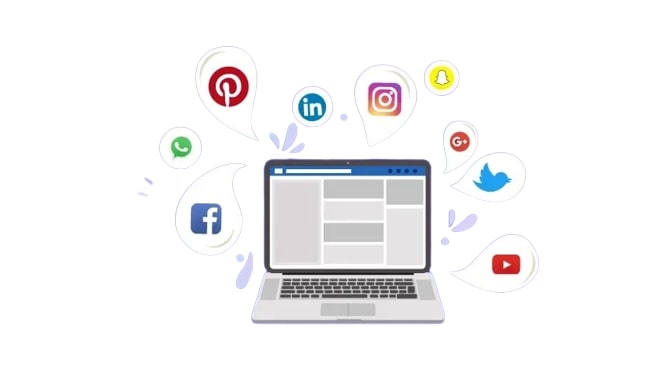
Types of Leads and Their Importance
When it comes to Lead Generation, understanding the different types of leads is crucial. Not all leads are created equal, and targeting the right type can make a significant difference in your marketing efforts.
We have cold leads. These are individuals who have shown no previous interest in your product or service. While they may not be actively seeking what you offer, they could still convert if approached correctly. Cold leads require more nurturing and persuasion to move them further down the sales funnel.
On the other hand, warm leads are people who have expressed some interest in what you offer but haven’t taken any action yet. They might have subscribed to your newsletter or downloaded a free resource from your website. These prospects are more likely to convert into customers with proper engagement and targeted messaging.
Next up are hot leads – these individuals are actively interested in purchasing your product or service. They may have requested a demo or reached out for more information directly. Hot leads should be prioritized as they’re closest to making a buying decision.
We can’t forget about qualified leads – those that fit your target customer profile and exhibit high levels of interest in what you provide. Qualified leads not only demonstrate intent but also possess characteristics that align with your ideal customer persona.
Understanding the importance of each type of lead allows businesses to tailor their strategies accordingly. By segmenting their audience based on where they fall within this spectrum, companies can optimize their marketing efforts and focus resources on those most likely to convert.
Successful lead generation involves identifying which types of leads hold the most potential for conversion while nurturing relationships with prospects at every stage of the buyer’s journey.
Strategies for Effective Lead Generation:
In today’s highly competitive business landscape, Lead Generation has become more important than ever before. It is the lifeblood of any successful business, driving growth and revenue. By understanding what lead generation is and implementing effective strategies, businesses can tap into a pool of potential customers who are actively interested in their products or services.
Throughout this guide, we have explored the definition of lead generation and its various aspects. We have delved into the psychology behind why people engage with leads and discussed the different types of leads and their importance. But now it’s time to focus on one crucial aspect: strategies for effective lead generation.
1. Know your target audience:
The first step in generating quality leads is to understand your target audience inside out. Conduct thorough market research to identify their needs, pain points, and preferences. This knowledge will help you tailor your marketing messages specifically for them.
2. Create compelling content:
Content plays a pivotal role in attracting leads. Develop high-quality content that provides value to your target audience while showcasing your expertise as an industry leader. Utilize blog posts, videos, eBooks, webinars, and other formats to capture attention and encourage engagement.
3. Optimize landing pages:
When driving traffic to specific landing pages through ads or organic search results, make sure they are optimized for conversions. Keep them simple yet persuasive by including clear calls-to-action (CTAs), captivating headlines, user-friendly forms, social proof elements like testimonials or case studies.
4. Use SEO techniques:
Implementing search engine optimization (SEO) tactics ensures that your website ranks higher in search engine results when potential leads are looking for solutions related to your offerings.
Make use of relevant keywords throughout your website content, pages, titles, and meta descriptions.
Be mindful not overstuffing keywords which can negatively impact rankings
5. Leverage social media platforms :
Social media channels provide immense opportunities for engaging with potential leads.
Directly interact with users through comments, responses, and sharing valuable content that resonates with your target audience. Utilize social media ads to
5. Utilizing Social Media Platforms
In today’s digital age, social media has become an indispensable tool for businesses to connect with their target audience and generate leads. Platforms like Facebook, Instagram, LinkedIn, and Twitter offer a vast pool of potential customers just waiting to be tapped into.
To effectively utilize social media for lead generation, it’s crucial to understand your audience demographics and tailor your content accordingly. Engage with your followers through compelling visuals, informative posts, and interactive contests or giveaways. Encourage them to share your content with their networks to expand your reach organically.
6. Implementing Email Marketing
Another powerful strategy is implementing email marketing campaigns. Despite the rise of various communication channels, email remains a highly effective way to nurture leads and convert them into paying customers. Craft personalized emails that resonate with your recipients’ pain points and provide valuable solutions.
Segmenting your email list based on demographics or previous interactions allows you to send targeted messages that are more likely to resonate with each group. Don’t forget the importance of strong call-to-actions (CTAs) in every email – guide readers towards taking specific actions such as signing up for a free trial or downloading an e-book.
By combining the power of social media platforms and effective email marketing campaigns, you can create a dynamic lead generation strategy that reaches potential customers where they spend most of their time online. So get creative, build relationships through engaging content, and watch as those leads start pouring in!

Tools and Resources for Successful Lead Generation
Tools and resources play a crucial role in successful Lead Generation efforts. With the right tools, you can streamline your processes, automate tasks, and effectively track the performance of your campaigns. Here are some key tools and resources that can help you achieve success in lead generation:
1. Customer Relationship Management (CRM) Software: A CRM system is essential for managing leads throughout their journey. It allows you to store contact information, track interactions, and nurture relationships with potential customers.
2. Lead Capture Forms: These forms enable you to collect valuable information from website visitors in exchange for content or offers. They should be strategically placed on your website to encourage conversions.
3. Email Marketing Platforms: Email remains one of the most effective channels for lead nurturing. Tools like Mailchimp or HubSpot allow you to create targeted email campaigns, segment your audience, and analyze campaign performance.
4. Social Media Management Tools: Social media platforms offer powerful opportunities for lead generation. Utilize tools like Hootsuite or Buffer to schedule posts, monitor engagement, and identify potential leads.
5. Content Creation Tools: Creating high-quality content is vital for attracting leads. Use tools such as Canva or Adobe Spark to design visually appealing graphics and videos that resonate with your target audience.
6. Analytics Tools: To measure the effectiveness of your lead generation efforts accurately, you need robust analytics tools such as Google Analytics. These tools provide insights into website traffic sources, pages visited, and conversion rates.
In summary, the right set of tools can significantly enhance your lead generation strategies. Don’t hesitate to explore different options available based on specific business needs. With proper implementation, you’ll be able to optimize every aspect of your process from capturing leads all the way through converting them into loyal customers.
Measuring and Tracking Your Lead Generation Efforts Common Mist
In today’s competitive business landscape, Lead Generation has become an essential component of any successful marketing strategy. By effectively generating and nurturing leads, businesses can increase their chances of converting prospects into loyal customers. However, it is crucial to measure and track your lead generation efforts accurately to ensure optimal results.
One common mistake that many businesses make when it comes to measuring and tracking their lead generation efforts is relying solely on vanity metrics. Vanity metrics are those numbers that may look impressive at first glance but do not provide meaningful insights into the effectiveness of your lead generation campaigns.
Instead, focus on tracking metrics that directly impact your bottom line, such as the number of qualified leads generated, conversion rates, customer acquisition costs (CAC), and return on investment (ROI). By analyzing these key performance indicators (KPIs), you can gain valuable insights into which strategies are working well for your business and identify areas for improvement.
Another mistake to avoid is failing to integrate your lead generation efforts with a robust CRM system or marketing automation platform. These tools allow you to streamline and automate various aspects of your lead nurturing process while providing in-depth analytics and reporting capabilities. With a CRM or marketing automation platform in place, you can easily track the progress of individual leads through different stages of the sales funnel and tailor your messaging accordingly.
Additionally, don’t disregard the importance of A/B testing in optimizing your lead generation campaigns. Test different variations of landing pages, email subject lines, call-to-action buttons, or social media ad copy to determine what resonates best with your target audience. Continuously experimenting with different elements will help you refine your approach over time for better results.
Remember that effective measurement and tracking require ongoing monitoring and analysis. Set up regular reporting intervals to assess the performance of each campaign thoroughly. This will enable you to make data-driven decisions regarding adjustments or optimizations needed along the way.
In conclusion
Lead Generation is a vital aspect for any business looking to grow its customer base and increase revenue. By utilizing social media platforms, implementing.
Contact Us
The Art and Science of B2B Lead Generation: Strategies to Attract and Convert Potential Customers

Welcome to the world of b2b lead generation, where art and science come together to fuel business growth! In today’s competitive marketplace, attracting and converting potential customers is more crucial than ever. Whether you’re a small startup or an established enterprise, mastering the art and science behind lead generation can make all the difference in your success.
But what exactly is lead generation? Simply put, it’s the process of capturing interest from potential customers or leads and nurturing them into paying customers. It involves understanding your target audience, creating compelling content, utilizing various marketing channels effectively, and building relationships through personalized communication.
In this blog post, we’ll delve into the strategies that can help you attract and convert those valuable leads. From identifying your ideal customer profile to leveraging social media platforms and implementing effective SEO techniques – we’ve got you covered! So, let’s dive in and explore the fascinating world of lead generation marketing. Get ready to revolutionize how you generate B2B sales leads by unleashing powerful tools tailored for success!
Understanding the art and science behind b2b lead generation
B2B Lead Generation is both an art and a science. It requires creativity, strategy, and careful analysis to attract potential customers and convert them into actual leads. The art lies in crafting compelling content that resonates with your target audience, while the science involves using data-driven insights to optimize your b2b lead generation efforts.
To truly understand the art of b2b lead generation, you need to start by identifying your target audience. Who are they? What are their pain points? By creating buyer personas, you can tailor your marketing messages to address their specific needs and interests.
Once you have a clear understanding of your target audience, it’s time to get creative with your strategies. Content marketing plays a crucial role in attracting potential customers through valuable blog posts, informative videos, or engaging social media campaigns.
Social media platforms provide an excellent opportunity for businesses to connect with their target audience on a more personal level. By sharing relevant content and actively engaging with followers, you can build trust and establish yourself as an authority in your industry.
However, attracting potential customers is just the first step. Lead magnets are incentives that entice visitors to provide their contact information, such as free e-books and exclusive offers.
If your customer is in the early stages of their journey, provide educational resources and offer special promotions.
In conclusion…
Through the use of creative content marketing and social media engagement, as well as lead magnets and personalized email communication techniques, businesses can harness their full potential to generate leads.

Identifying your target audience and creating a buyer persona
Identifying your target audience is a crucial step in any successful b2b lead generation strategy. Understanding who your potential customers are and what they need allows you to tailor your marketing efforts specifically towards them.
To begin, take a deep dive into your existing customer base. Analyze their demographics, interests, and behaviors to identify common patterns or characteristics. This will help you create a buyer persona – a fictional representation of your ideal customer.
Take into account factors such as age, gender, location, occupation, challenges they face, and goals they want to accomplish. Creating a detailed persona will help you reach similar people and engage them.
Additionally, conducting market research can provide valuable insights into the needs and preferences of your target audience. Surveys, interviews with current customers or industry experts can uncover pain points that you can address through targeted content or product offerings.
By identifying your target audience and creating an accurate buyer persona, you can craft messaging that resonates with their needs and desires. Then, you can develop content that speaks directly to their pain points.
To ensure that you stay aligned with customer needs, review data analytics regularly and solicit feedback from customers to determine your target audience. The more insights you gain, the more effective you will be at generating high-quality leads.
Strategies for attracting potential customers through content marketing, social media, and SEO
Strategies for attracting potential customers through content marketing, social media, and SEO can greatly enhance your b2b lead generation efforts. Let’s dive into each of these strategies individually to understand how they can help you reach and engage with your target audience.
Content marketing is an effective way to attract potential customers by providing valuable and relevant information. As an industry authority, you can establish yourself as a trusted source by writing high-quality blogs, articles, videos, and infographics. This not only attracts potential customers but also keeps them engaged and interested in what you have to offer.
Social media platforms provide an excellent opportunity to connect with your target audience on a personal level. By sharing engaging content regularly and actively interacting with your followers’ comments and messages, you can build a strong online presence. Utilizing social media advertising options further helps amplify your reach to potential customers who may not be familiar with your brand yet.
SEO (Search Engine Optimization) plays a vital role in making sure that when someone searches for products or services related to yours, they find you at the top of search engine results pages. Your website’s SEO should include using relevant keywords, building reputable backlinks, and improving the speed of the site.
Remember that consistency is crucial across all three strategies – content marketing, social media engagement, and SEO optimization – if you want to attract and convert potential customers effectively. By implementing these a strategic approach for B2B lead generation purposes while keeping up-to-date with industry trends and consumer behavior patterns – will yield significant results for growing leads!
The role of b2b lead magnets in capturing contact information from potential customers
One of the key strategies in b2b lead generation is using lead magnets to capture contact information from potential customers. A lead magnet is something of value that you offer in exchange for a person’s contact details, such as their email address. It acts as an incentive for individuals to provide their information willingly.
Lead magnets come in various forms and can be tailored to your target audience’s preferences. Offer your audience free eBooks, whitepapers, checklists, templates, webinars, or exclusive discounts.
The goal of a lead magnet is not just to collect contact information but also to establish trust and credibility with your potential customers. By offering them something useful upfront without asking for anything in return immediately, you are building a relationship based on reciprocity.
It’s crucial to ensure that your lead magnet aligns with the interests and needs of your target audience. Conduct market research and understand what challenges they face or what solutions they seek. This will help you create content that resonates with them and makes them more likely to provide their contact details.
Once you have captured someone’s contact information through a lead magnet, it opens up opportunities for further engagement through email marketing. You can nurture leads by sending personalized emails targeted towards addressing their pain points, providing additional resources or offers related to the original content they downloaded.
Remember that capturing contact information is just the beginning; it’s what comes after that sets successful businesses apart from others!

Nurturing b2b leads through email marketing and personalized communication
In the world of B2B Lead Generation, one cannot underestimate the power of email marketing and personalized communication in nurturing potential customers. Keep in touch with lead magnet recipients once you capture their contact information.
You can send relevant content, updates, and offers straight to your leads’ inboxes with email marketing. By segmenting your email list based on demographics, behavior patterns, or preferences, you can tailor your messages to resonate with different groups of leads.
Personalization is key when it comes to engaging potential customers. Gone are the days of generic mass emails that end up in spam folders or get deleted without even being opened. Instead, focus on crafting personalized emails that address each lead by name and speak directly to their pain points or aspirations.
Utilize automation tools and software platforms that enable you to send automated follow-up sequences based on user actions or triggers. This ensures that no opportunity slips through the cracks and every lead receives timely responses tailored to their specific journey.
Furthermore, consider integrating other channels like social media into your nurturing process. Share valuable content related to your leads’ interests, respond to comments, or run targeted ads targeting this audience segment.
Successful b2b lead generation requires both art and science – buyer personas inform your strategies while creativity makes you stand out. Try out different content formats such as videos and interactive quizzes, or A/B test subject lines.
Lead generation involves more than just acquiring contacts; it requires delivering value over time via email marketing and personalized communication. Your business model’s data-driven insights will determine how successful you are in generating B2B sales leads.

The science of conversion: optimizing landing pages and creating a seamless customer journey
When it comes to B2B Lead Generation, optimizing your landing pages is crucial for converting potential customers into actual leads. Visitors can be enticed to take action with the right landing page design and careful crafting.
It’s important to ensure that your landing page has a clear and concise message. Keep the content focused on the offer or value proposition you’re presenting, making it easy for visitors to understand what they will gain by providing their information.
Pay close attention to the design elements of your landing page. Use eye-catching visuals, compelling headlines, and persuasive calls-to-action (CTAs) that guide users towards taking the desired action. Remember: simplicity is key! Avoid cluttered designs that may confuse or overwhelm visitors.
Furthermore, consider implementing trust signals such as customer testimonials or industry certifications on your landing pages. Instill confidence in potential customers who may be hesitant to share their information.
To create a seamless customer journey from click-through to conversion, make sure there is consistency between your ad copy or email campaign and the messaging on your landing page. This helps maintain a cohesive experience for users throughout their interaction with your brand.
Don’t forget about mobile optimization! With an increasing number of people browsing on smartphones and tablets, it’s essential that your landing pages are responsive and easily accessible across different devices.
When you design your landing pages, you’ll increase the chances of converting interested prospects into potential leads.
Tools and software for effective b2b lead
Tools and software can play a crucial role in optimizing b2b lead generation efforts. With the right tools, businesses can streamline their processes, automate tasks, and gain valuable insights into their target audience.
One essential tool for effective lead generation is a customer relationship management (CRM) system. A CRM helps businesses manage their interactions with potential customers, track leads throughout the sales funnel, and nurture relationships over time. It centralizes data and allows teams to collaborate seamlessly.
Another helpful tool is marketing automation software. This technology enables businesses to automate repetitive marketing tasks such as email campaigns, social media posting, and lead scoring. By automating these processes, companies can save time and resources while delivering personalized experiences to prospects.
Data analytics tools are also invaluable when it comes to generating leads. These tools enable businesses to analyze website traffic patterns, identify key conversion points on landing pages, and track visitor behavior. By understanding how visitors engage with your content or site, you can make data-driven decisions that optimize conversion rates.
Furthermore, chatbots have emerged as powerful lead generation tools in recent years. These AI-powered virtual assistants can engage with website visitors in real-time by providing information or answering questions about products or services 24/7. Chatbots not only enhance the user experience but also capture valuable contact information from potential leads.
In conclusion (not concluding), leveraging the right tools and software is essential for effective b2b lead generation strategies in today’s digital landscape. From CRM systems to marketing automation software and data analytics tools – each plays a unique role in attracting qualified leads and converting them into loyal customers! So don’t underestimate the power of these technological advancements; they may be just what you need to take your lead generation efforts to new heights
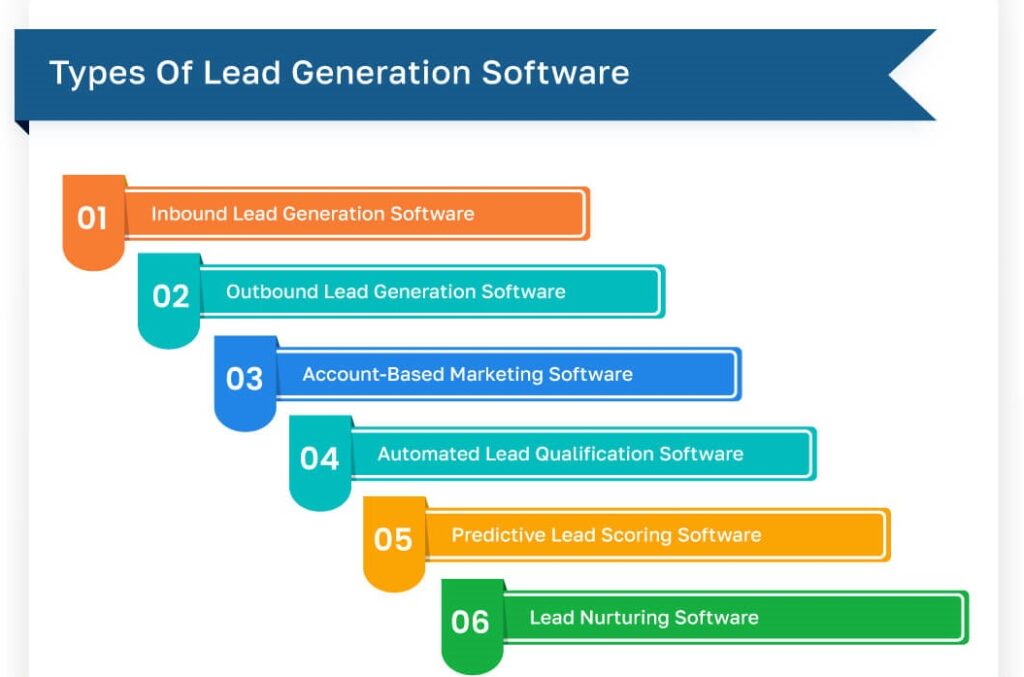
Conclusion: The Art and Science of Balancing
In the world of B2B Lead Generation, finding the right balance between art and science is crucial. It’s important to embrace creativity and human connection to optimize conversion rates along with data-driven strategies and analytical tools.
Successful b2b lead generation requires a deep understanding of your target audience, their pain points, and their motivations. By leveraging this knowledge, you can craft compelling content that resonates with them on an emotional level. It goes beyond just words to include visual design, persuasive elements like testimonials, and tone of voice.
However, relying solely on artistic intuition without incorporating scientific methods would be shortsighted. Analyzing data from different sources will help you identify trends, preferences, and opportunities for optimization. Tools like A/B testing software can provide insights into what works best for attracting leads and converting them into customers.
The key lies in striking a delicate balance between artistry and science throughout your lead generation efforts. By combining creative storytelling with data-driven decision-making processes, you can create a seamless customer journey that captures attention, builds trust.
Why Your Business Needs Lead Generation Services: Exploring the Benefits

Are you looking to take your business to new heights? Want to boost your sales and revenue? Then it’s time to explore the power of lead generation services! In today’s competitive market, businesses need a steady stream of qualified leads in order to thrive. But what exactly is lead generation, and how can it benefit your business? In this blog post, we will delve into the world of b2b lead generation services, uncovering their importance in driving growth and success. Get ready to discover why incorporating lead generation strategies into your marketing efforts is a game-changer for your business!
What is lead generation and how does it work?
What is lead generation and how does it work? These are common questions that many business owners have. Leads refers to the process of identifying and attracting potential customers for your products or services. It Captures, their interest and collecting their contact information so that you can nurture them into becoming paying customers.
There are various methods used in b2b leads, but one of the most effective strategies is content marketing. By creating valuable and relevant content, you can attract your target audience and encourage them to provide their contact details in exchange for access to the content.
Another popular method is using landing pages with opt-in forms. These pages are designed specifically to capture visitor information by offering something of value, such as a free eBook or webinar registration.
Lead generation also involves utilizing various online channels like social media, search engine optimization (SEO), email marketing, and paid advertising campaigns. Each channel has its own unique benefits in reaching and engaging with potential leads.
Lead genera works by leveraging different tactics and channels to attract prospects who have shown an interest in your products or services. The goal is to convert these leads into loyal customers through targeted marketing efforts tailored to their needs and preferences.
Benefits of using lead generation services for your business
Increased Sales and Revenue
Lead generation services can significantly impact the growth of your business by generating a steady stream of qualified leads. To attract new customers, these services use email marketing, content marketing, and social media advertising. By targeting these individuals, you increase your chances of converting them into paying customers, which ultimately leads to increased sales and revenue.
Targeted and Qualified Leads
One of the key advantages of using lead generation services is their ability to provide targeted and qualified leads. Instead of wasting time on cold calling or mass mailing, these services help you reach out to individuals who have already shown interest in what you offer. This means that the leads provided are more likely to convert into actual sales.
Cost-Effective Marketing Strategy
Compared to other traditional forms of marketing like print ads or TV commercials, leads services offer a cost-effective alternative. With lead generation, you only pay for the leads generated rather than spending money on reaching a broad audience with no guarantee of results. This allows you to optimize your marketing budget by focusing on those prospects who are most likely to become customers.
Time-Saving and Efficient
Lead generation services take care of the time-consuming tasks involved in finding potential customers so that you can focus on what matters most – running your business. They use advanced tools and techniques to identify high-quality leads quickly and efficiently. Outsourcing this process allows you to focus on developing new products and services or nurturing existing client relationships.
Improved Customer Relationships
Lead generation not only helps acquire new customers but also plays a crucial role in building strong relationships with them over time. By understanding their needs through ongoing communication, personalized offers, and relevant content, you can establish trust and loyalty among your target audience. This long-term relationship-building approach enhances customer satisfaction while increasing repeat business opportunities.
Incorporating leads services into your business strategy can offer numerous benefits. From boosting
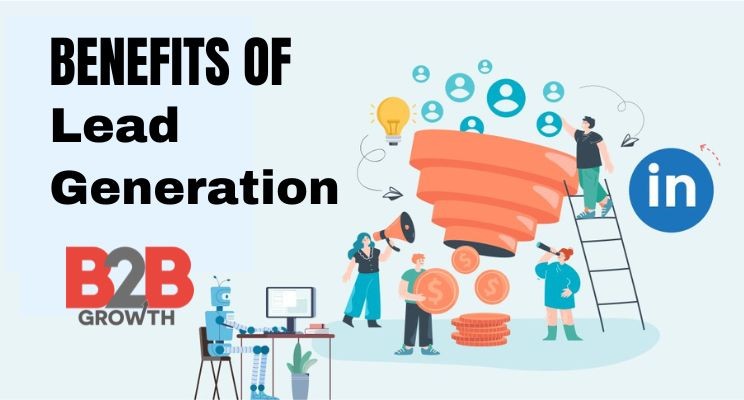
Types of lead generation services available
Inbound lead generation
Lead generation services come in various forms, each catering to different aspects of your business. One popular method is inbound lead gen, which focuses on attracting potential customers through valuable content and engaging marketing strategies. Creating informative blog posts, videos, or social media campaigns can help businesses attract prospects.
Outbound lead generation
On the other hand, outbound lead gen takes a more proactive approach by reaching out to potential leads directly. This could involve cold calling or sending personalized emails to individuals who fit the target audience profile. Although it requires more effort and persistence, outbound lead gen can yield significant results if done right.
Online lead generation
In today’s digital age, online b2b lead generation has become increasingly important for businesses of all sizes. Through various online channels such as search engine optimization (SEO), pay-per-click advertising (PPC), and social media marketing (SMM), companies can generate leads effectively by targeting specific demographics and capturing their interest with compelling ad campaigns.
Each type of lead gen service offers its own unique advantages and should be tailored to suit your specific business objectives and target audience. Whether you choose inbound, outbound or online methods – or even a combination of them – implementing these strategies will undoubtedly boost your chances of generating high-quality leads that convert into loyal customers. So why wait? It’s time to leverage the power of b2b leads for your business success!
Case Studies/Success Stories from Businesses Using Lead Generation Services
Many businesses across various industries have experienced great success by utilizing Lead Generation services. Let’s take a look at some case studies and success stories that highlight the benefits of these services.
One such example is Company XYZ, a B2B software company. Prior to using b2b leads services, they struggled to generate high-quality leads and convert them into customers. However, after partnering with a L.G. agency, they saw significant improvements in their lead conversion rates.
Another success story comes from Company ABC, an e-commerce retailer. They were struggling to reach their target audience and increase sales. By leveraging online L.G. strategies such as search engine optimization (SEO) and content marketing, they were able to attract more qualified leads and boost their revenue.
Furthermore, Case Study 123 showcases how outbound lead gen helped a consulting firm expand its client base. Through targeted cold calling campaigns and personalized email outreach, they were able to connect with decision-makers in their target market and secure new business opportunities.
These examples demonstrate how different types of Lead Generation Services can be tailored to specific business needs and yield impressive results. Whether it’s inbound, outbound or online b2b leads tactics being employed, businesses can tap into a steady stream of potential customers who are actively interested in what they offer.





